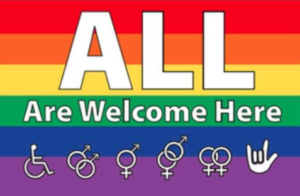February is Teen Dating Violence Awareness Month.
First recognized in 2009, this month-long campaign is dedicated to spreading information about teen dating violence and sharing resources for those who have been affected.
1 in 3 US teens will experience physical, sexual, or emotional abuse with someone they are in a relationship with by the time they become adults. As this violence continues to occur at alarming rates, the development of appropriate resources and interventions is crucial.
Advocacy
There are plenty of advocacy opportunities for parents, teachers, those in leadership roles, and fellow teens to pursue in response to teen dating violence.
Advocacy can take on many different forms and strategies, making it easier for everyone to get involved in stopping teen dating violence.
Examples of advocacy opportunities include:
-Using platforms and networks to share information and resources for teens and those who work or live with them
-Attending webinars or trainings on teen dating violence
-Promoting safe dating curriculum and awareness within school systems
-Supporting the initiatives and efforts of organizations that aim to prevent and respond to teen dating violence, such as Love Is Respect.
Action
Actions to prevent and respond to teen dating violence can occur on scales both large and small.
Examples of action opportunities include:
-Having a discussion with a teen about safe dating strategies, consent, boundaries, and the need for open communication with friends/family
-Donating money or time to organizations that are supporting teens living through teen dating violence, such as Scarleteen, StrongHearts, Break the Cycle, and Brown Boi Project
-Encouraging teens to join clubs, networks, or groups that promote healthy interactions with other teens and provide safe opportunities for engagement with their peers
-Discussing with your child how dating and sex are depicted within the media. Challenge unhealthy expectations or examples that may influence how teens approach dating.
Prevention
Teen Dating Violence can be prevented.
The Centers for Disease Control and Prevention has recognized domestic and sexual violence as a public issue. In an attempt to respond to and prevent the occurrence of this violence, the CDC has created a variety of evidence-based programs to reinforce healthy behaviors and reduce behaviors that increase the likelihood of someone becoming a perpetrator or victim of dating violence.
Prevention is not just limited to program delivery, however.
Examples of prevention opportunities include:
-Intervening in the moment when a situation seems like it could turn violent or dangerous. This intervention could be used by school officials, fellow students, or parents.
-Discussing warning signs of dating violence with teens.
-Teaching teens to be assertive and stand up for fair treatment of themselves or others.
-Be a positive role model for teens in your life. This can be done by modeling healthy communication, boundaries, respect, and using appropriate language.
-Do your research! Support efforts by organizations to prevent dating violence. Consider contacting your legislators to voice support of bills that will promote the work of direct service agencies and give more resources to victims.
Be sure to follow us on Facebook, Instagram, and Twitter for more information about teen dating violence and opportunities for you to get involved!


Comments are closed